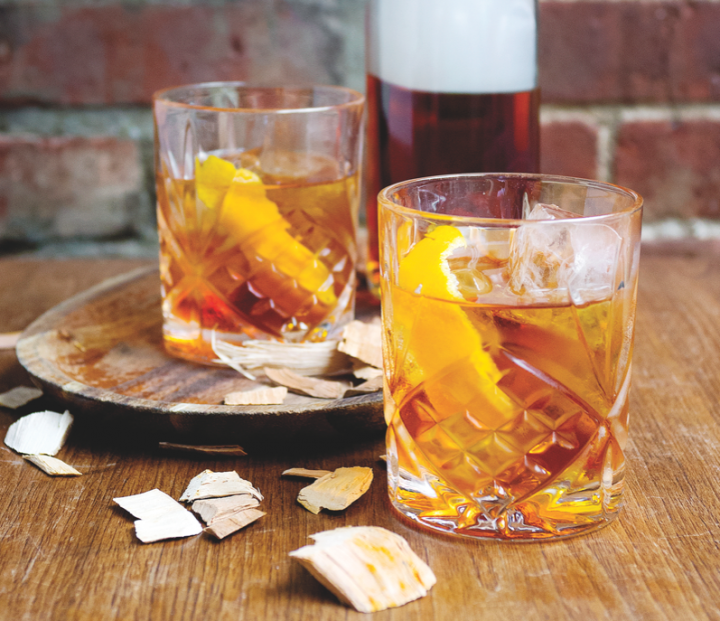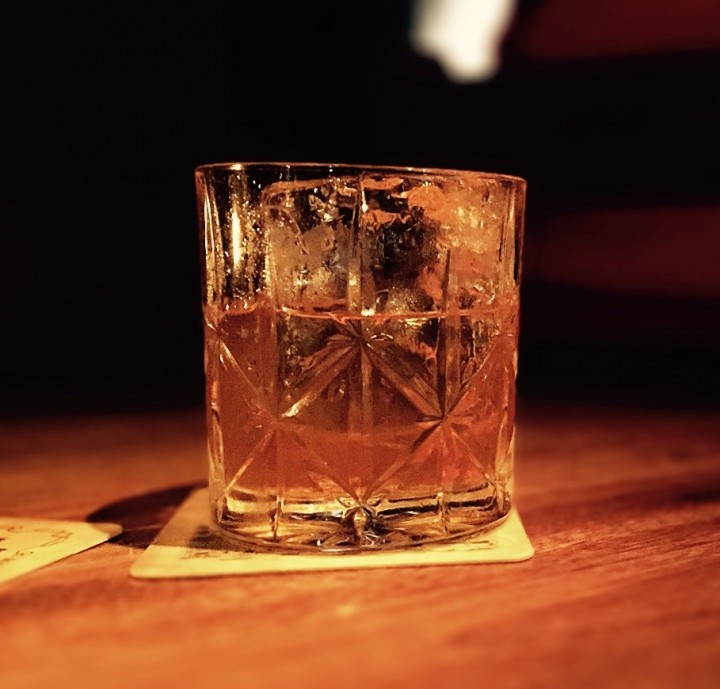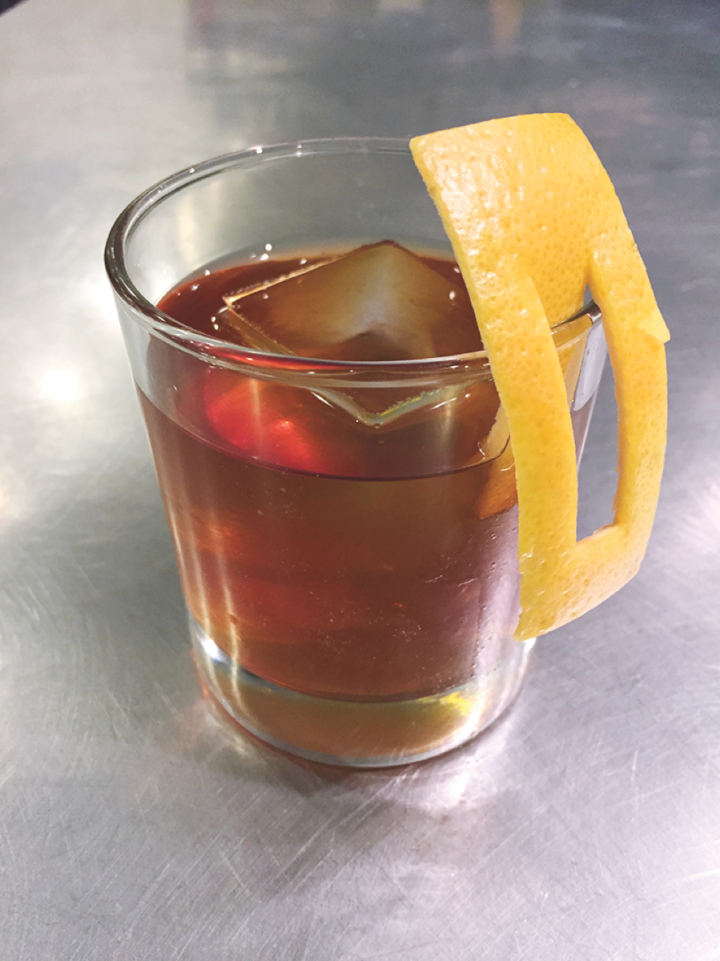
Spirits like gin, Cognac and Bourbon all have storied histories in cocktail culture, appearing innumerable times in 19th– and early 20th-century bartending handbooks like The Savoy Cocktail Book. Scotch whisky, though certainly a historical spirit, appears less often in such classic recipe guidebooks, with many connoisseurs eschewing the very notion of mixing it with other ingredients. “For a long time, there were plenty of Bourbon and rye cocktails, but people shied away from Scotch drinks,” notes Nicola Riske, brand ambassador for Cutty Sark and The Famous Grouse blended Scotch whiskies at Edrington Americas.
This long-held view of how Scotch should be imbibed is changing, however, thanks to the mixology movement that first gained momentum at the turn of the 21st century and shows no signs of slowing. “Scotch producers are embracing the cocktail world more than ever now, whereas in previous years we would have considered the use of Scotch in cocktails sacrilegious,” says Struan Grant Ralph, brand ambassador for Glenfiddich single malt Scotch whisky at William Grant & Sons. “Many producers now understand that Scotch cocktails can open up new consumers to the wonderful spirit.”
Indeed, for many younger millennial consumers, cocktails offer an introduction to new spirits, ingredients and products they may otherwise have never come across. This approach has certainly been the case with Scotch as more mixologists have begun experimenting with the spirit. “The cocktail boom has been a fantastic way for new Scotch drinkers to discover this beautiful spirit,” Riske says. “For those who may hesitate to drink whisky neat or on the rocks, a simple Whisky and Ginger Ale or a classic cocktail like the Blood and Sand can provide a wonderful introduction.”

Kevin Denton, national mixologist for Pernod Ricard USA, also notes that younger consumers are getting into Scotch due to the popularity of mixology. “The resurgence of cocktails has brought about renewed interest in Scotch in the millennial mind-set and has shown that it’s not just for sipping at country clubs in hushed settings,” he says. Pernod Ricard markets such labels as The Glenlivet single malt and Chivas Regal blended Scotch.
Andrey Kalinin, beverage director of New York City bar Highlands, agrees that Scotch is shedding its former image as a spirit enjoyed solely by older men in smoking rooms. “Many people who once refused to drink what they perceived to be their granddad’s dram or had misconceptions about the category in general are now drinking more Scotch as they’re introduced to it in mixed drinks,” he says.
Edrington’s Riske adds that Scotch cocktails aren’t only for novices. “For those who’ve been drinking Scotch neat for many years, cocktails offer a wonderful way to rediscover how they can enjoy whisky-sipping and change things up a bit,” she says.

Natural Progression
In the world of mixology, no spirit is off-limits. Mixologists and bartenders are always seeking new ways to hone their craft, experiment with different flavors and come up with new combinations. After using Bourbon and rye whiskies in cocktails, branching out to Scotch is the next step toward creating new and unexpected drinking experiences.
“I think Scotch has become more popular lately because bartenders are following the natural progression of the whisk(e)y category,” says Scott Koehl, bar manager at Ada Street in Chicago. “As bartenders experiment with different, obscure or rarely used spirits, those ingredients get more exposure and an increased following.”
Koehl adds that The Only Son of the Ladies’ Man ($12) is Ada Street’s most popular Scotch cocktail. It combines a basil-infused mix of Laphroaig 10-year-old single malt and Pig’s Nose blended Scotch with Combier Crème de Pêche de Vigne peach liqueur, lemon juice and house-made honey syrup. “I like using what we call our house Scotch, which is one part Laphroaig to four parts Pig’s Nose,” Koehl says. “This blend allows us to stretch volume so we can make a single malt cocktail and not have to charge $18 for it. It also mellows the intense peat and smoke of the Laphroaig to create more cocktail options.”
Highlands’ Kalinin recommends becoming familiar with the flavor profiles of different Scotch whiskies before attempting to make cocktails. “What works with one whisky doesn’t necessarily work with another,” he says. “It’s important to constantly taste your whiskies to carefully select what could make the best combinations and complement your cocktail ingredients. I like working with honey, different types of sugar, various bitters, savory elements and vermouths.” A popular signature Scotch cocktail on the Highlands cocktail list that Kalinin created is The Catholic Guilt ($13), which comprises The Black Grouse blended Scotch, house-made ginger syrup, lemon juice, house-made black fig bitters, Regans’ No. 6 orange bitters, Fee Brothers Orange bitters and a Fernet-Branca amaro float.
“A lot of what’s propelling the popularity of Scotch cocktails today is bartender advocacy,” Pernod Ricard’s Denton says. “The modern mixologist is always looking for more flavors to add to his or her tool kit. Scotch greatly expands not only the whisk(e)y category, but the overall palate.”

Surprisingly Accessible
Denton notes that although Scotch whisky is often characterized by its intensity, many brands have bright flavors that work well in lighter libations. “The citrus and cereal notes found in Scotch make a great jumping off point for cocktail creation,” he says. “Orange and lemon pop in drinks like the Scotch Sour and the Collins.” Pernod Ricard’s Speyside Spritzer blends The Glenlivet Founder’s Reserve single malt with lemon juice, simple syrup and Mumm Napa Brut Prestige sparkling wine.
“I think the huge spectrum of flavors Scotch offers makes it a very versatile cocktail ingredient,” says Trevor Frye, beverage director of Washington, D.C.’s Jack Rose Dining Saloon and co-owner of the downstairs speakeasy Dram & Grain. “From peat levels to the various finishes, there are almost limitless possibilities to enhance flavors in a cocktail with Scotch. I think you’d be hard-pressed to find another spirit that has such a vast contrast in flavors.”
A simple, interesting way to introduce consumers to Scotch whisky is in a simple drink like the Scotch Sour. Each variation will have its own distinct flavor due to the whisky used and other ingredients added, taking a relatively simple three-ingredient cocktail to new levels of flavor complexity. Usquaebach blended Scotch’s Ginger Sour is made with the brand’s Reserve expression, homemade ginger syrup, Angostura bitters, fresh lemon and lime juices, and egg white. At Ada Street, Koehl’s Anji ($12) features the bar’s house Scotch blend, lemon juice, simple syrup and aji amarillo pepper paste, served with a small glass of Founders Brewing Co.’s All Day IPA. Guests are encouraged to taste the cocktail and the beer separately and then pour the brew into the cocktail according to their taste preference.
“The most popular cocktails at Jack Rose and Dram & Grain are variations on Scotch Sours,” Frye says. At Jack Rose, the After Dinner Breakfast ($13) features Glenmorangie Lasanta single malt Scotch, house-made Earl Grey tea syrup, lemon juice and Bittermens ‘Elemakule Tiki bitters.
“Scotch is surprisingly accessible when you pair it with the right ingredients,” Ada Street’s Koehl says. “I have customers who were previously sworn Scotch haters and now order more Scotch than any other spirit.”
Edrington’s Riske notes that a common misconception about Scotch is that it’s too bold and overpowering, while in reality Scotch can be quite adaptable in cocktails if incorporated appropriately. “Scotch is such a versatile spirit category—a bit like wine, where you have so many different varietals,” she explains. “Some Scotches are light, delicate and floral; others are bold, rich and fruity; and some are smoky with layers of toffee and vanilla. It’s fun to discover the nuances of each Scotch and then create the right cocktail around that flavor profile. Scotch can definitely be enjoyed year-round in a wide range of different concoctions, from Champagne cocktails to tiki drinks.”
At Employees Only in New York City, principal bartender Dev Johnson’s Almost There ($16) is a tiki-inspired drink with Scotch at its base. The cocktail is made with Cutty Sark Prohibition Edition blended Scotch, fresh lime juice, simple syrup, Marie Brizard Apry apricot liqueur, mint leaves, Angostura bitters and club soda.

Up The Ante
Working with Scotch presents mixologists with an exciting challenge, as no two Scotches are the same and finding the right balance can be a difficult yet rewarding task. Highlands’ Kalinin says that the diversity within the Scotch category is what he likes most about it. “Every single dram is a unique substance, and it’s always a challenge to find which ingredients to pair with a particular whisky,” he says. “Even the same whiskies released in different years vary in flavor profile. Scotch is a living organism—it keeps my job interesting.”
Scotch’s unique flavor profiles make it a go-to when attempting to elevate an otherwise simple or well-known recipe. Drinks that commonly feature Bourbon or rye whiskey as the base are made into something entirely different when Scotch is used instead. Kalinin’s Highlands Scotch Old Fashioned ($13) mixes Glen Grant The Major’s Reserve single malt Scotch, liquid cane sugar, Angostura bitters and cherry wood smoke. Cutty Sark’s take on the Boulevardier features the brand’s Prohibition Edition expression, Campari aperitif and Carpano Antica Formula sweet vermouth, while the Cutty Fashion features the label’s original blended Scotch, simple syrup, orange peel and Angostura bitters.
For the launch of Glenfiddich 14-year-old Bourbon Barrel Reserve single malt in October, New York City–based mixologist Shem Blum created a Scotch-based take on the Whiskey Smash, which traditionally features Bourbon. The Bourbon Barrel Smash features Glenfiddich Bourbon Barrel Reserve, fresh lemon juice and Demerara syrup muddled with lemon wedges, brandied cherries and mint leaves. A twist on the same cocktail, The Highland Smash at Highlands ($12) comprises Dewar’s Highlander Honey blended Scotch, cane sugar muddled with mint leaves and lemon, and club soda.
“Using the peated smoke of a Scotch can add a new level of complexity to your cocktail, and the richness of a well-aged whisky can add depth,” William Grant & Sons’ Ralph says. “Consider the difference of making an Old Fashioned with a younger rye whiskey or an old Speyside single malt—you’re getting so much more flavor from the latter.”

The Bolder, The Better
Bourbon- and rye-based cocktails, such as the Manhattan and Old Fashioned, have paved the way for Scotch-based classics to come back into the spotlight. Drinks like the Rob Roy—made with Scotch, sweet vermouth and Angostura bitters—and the Bobby Burns—comprising Scotch, sweet vermouth and Bénédictine herbal liqueur—are more prevalent now than they have been in years. The trend is a sign that today’s consumers are open to spirit-forward, bold drinks.
“Bolder flavors are playing a more important role in cocktails, with consumers more inclined toward brown spirits and Scotch in particular than they were a decade ago when the American cocktail world was dominated by white spirits,” Ralph says, pointing to the popularity of the Penicillin cocktail. Created in 2005 at New York City bar Milk & Honey by mixologist Sam Ross, the Penicillin is made with Teacher’s blended Scotch, fresh lemon juice, house-made honey-ginger syrup and a Laphroaig 10-year-old single malt float. The drink ($16) is now available at Ross’s Attaboy, which took over the Milk & Honey space in 2013. “The Penicillin shows that using unique flavors in Scotch can add incredible new dimensions to a cocktail,” Ralph notes.
Frye of Jack Rose agrees. “I think contemporary classics like the Penicillin have been great for Scotch and have opened up people’s minds to look beyond the Rusty Nail, Rob Roy and Bobby Burns,” he says. “After I had a Penicillin for the first time, I started using more Scotch in cocktails.” At Dram & Grain, Frye’s Bedtime Story ($15) is made with Glenmorangie Quinta Ruban 12-year-old single malt Scotch, Lustau Amontillado Los Arcos Sherry, Fernet Leopold Highland amaro, kombucha green tea–infused Dolin Blanc vermouth and Bittercube Orange bitters.

“Fortified wines like Port and Sherry are being used a lot in Scotch cocktails lately,” Edrington’s Riske says. At Jack Rose, the Fat Harold ($13) features Laphroaig 10-year-old single malt, Barbadillo Obispo Gascon Palo Cortado Sherry, house-made Piña Colada shrub and Peychaud’s bitters.
Many contemporary Scotch cocktails embrace the spirit’s boldness and pair it with similarly bold flavors like amaro and herbal liqueurs. Usquaebach brand ambassador Ryan Judson created the Highlands Redhead, made with the brand’s Reserve expression, Amaro Lucano and Angostura Orange bitters. At The Dead Rabbit in New York City, head bartender Jillian Vose’s the Drawing Board ($15) blends Cutty Sark Prohibition Edition, Drambuie Scotch whisky liqueur, Bénédictine, The Bitter Truth Jerry Thomas’ Own Decanter bitters, expressed lemon peel and a Laphroaig 10-year-old single malt rinse.
“The key is flavor,” Riske says. “Scotch adds depth and character to a cocktail. It’s the lead singer in the band—not the back-up vocalist.”


